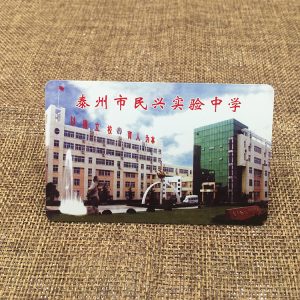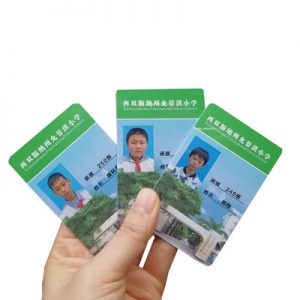



Product information:
|
1. Material: |
PVC/ABS/PET/PS |
|
2. Size: |
ISO CR80 Standard:85.5mm*54mm or on demand |
|
3. Thickness: |
ISO standard 0.76mm, other size is available 0.03mm/0.38mm/0.5mm/0.76mm or according your requirement. |
|
4. Minimum QTY: |
500pcs |
|
5 Available crafts: |
scratch-off panel, series number punch, pin number, 4 color offset printing, magnetic stripe, embossing number, signature panel, photo, barcode, hot-stamping gold/shiver color , hole punched, UV Printing etc. |
|
6. Applications: |
Club, visiting, promotion, advertising, enterprises, bank, traffic, insurance, super marketing, parking, school, access control, ect. Surface option: glossy, matte/rough matte/ frosting transparent/ transparent |
|
7. Price terms: |
We accept FOB /CNF/CIF price. |
|
8. Lead time: |
5~7days after the receipt of 50% deposit of the total payment (below 50000 pcs.) |
The full name of ID card is Identification Card. It is a non-writable proximity card with a fixed number. It mainly includes EM format of Taiwan SYRIS, American HIDMOTOROLA and other types of ID cards. The ID card, like the magnetic card, only uses the “card number”. In addition to the card number, there is no confidentiality function inside the card, and the “card number” is public and exposed. Therefore, the ID card is an “inductive magnetic card”. The specification of the ISO standard ID card is: 85.5x54x0.80±0.04mm (height/width/thickness). There are also some thick, thin or special-shaped cards on the market.
working principle:
The system consists of an ID card and a background controller. The working process is as follows: 1. The ID card reader sends the carrier signal through the antenna, the carrier frequency is 125KHZ (THRC12) 2. After the ID card enters the working area of the card reader, the resonance formed by the inductor coil and the capacitor in the reader The loop receives the carrier signal emitted by the reader, and the radio frequency interface module of the chip in the card generates the power supply voltage, reset signal and system clock from this signal, so that the chip “activates”; 3. The chip read control module adjusts the data in the memory After phase encoding, it is modulated on the carrier wave and sent back to the card reader via the card’s internal antenna; 4. The card reader demodulates and decodes the received card return signal before sending it to the background computer; 5. The background computer is based on the legality of the card number Performance, and make corresponding processing and control for different applications.
classification:
The specification of the ISO standard ID card is: 85.6x54x0.80±0.04mm (height/width/thickness). There are also some thick, thin or special-shaped cards on the market.
ID thick card: thickness>0.9mm, the size of standard card
Standard card: 85.6x54x0.80±0.04mm size, can be offset printing, silk screen printing, printing photos, etc.;
Special-shaped cards: different sizes, shapes, etc., can be offset printing, screen printing, printing photos, etc.
Our company:
























